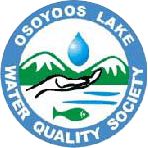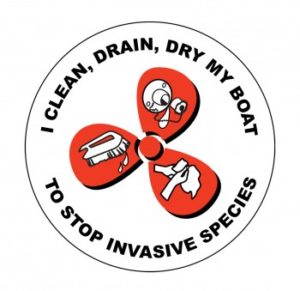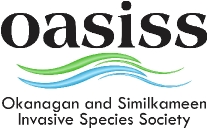Storm Drains
What’s a storm drain?
It is a metal grate or grille located at the edges of a road or on any paved area, designed to drain excess rain and ground water from paved streets, parking lots, sidewalks and roofs. In the town of Osoyoos, storm drains (about 150 of them) are connected via underground pipes to two outlet pipes at the lake: one near the Seniors’ Centre (now no longer used) and the other at the Marina (north of the Osoyoos Museum). There are several other outflow pipes at various places on the east and west sides of the lake.
Storm drains are considered one of the major causes of pollution in Osoyoos Lake. Urban runoff is a serious problem throughout the world: for example the U.S. Environmental Protection Agency has identified urban storm water runoff as the leading cause of water pollution in the U.S.
What’s the problem with storm drains?
Think about this: …. almost every bit of garbage, every drop of oil or unwanted soda drink that is dropped or tossed into the road or gutter or onto a sidewalk, will eventually end up in the la
Unlike the water that goes down your household drain to the sewer, water that flows into storm drains is not treated or filtered for pollutants. Runoff from snow and rain washes anything that’s on the roads down into these drains and out into the lake, affecting plants, fish and the delicate ecosystem of Osoyoos Lake.
Toxic substances can be any form of solid, liquid or gas, either organic or inorganic which causes human and wildlife health problems, for example:
- Fertilisers and pesticides
- Household cleaners
- Pet waste
- Waste water
- Litter
- Gasoline
- Vehicle waste products such as oil, antifreeze, car exhaust emissions, gasoline
- Cigarette butts
- Road salt
- Spilt drinks, pop etc
Since concrete, ashphalt and other man-made substances we use to build with do not absorb rainwater, runoff from urban areas is nine times greater than it is from forest land. Osoyoos has a unique problem because of its climate: rainfall is rare, so buildup of garbage and toxins on the surface can become excessive before it gets washed into the storm drains. This doubles the impact it has on the lake and its inhabitants.
Why are there yellow fish painted next to storm drains in Osoyoos?
They are to remind people not to put anything down a storm drain.
Osoyoos Lake Water Quality Society volunteers paint the yellow fish as required, often with the help of local youth groups.
What can be done?
Some towns and cities in Canada use various forms of filtration systems for storm water that are extremely effective, for example:
- A series of filter screens – inexpensive, but need to be removed and cleaned or replaced each month.
- Installing small catchment basins under each storm drain which are emptied and cleaned out regularly.
- Bioretention systems – these mimic wetlands, and use natural organic filtration by way of soils, sand, mulch, plants, and ponds. They can be just a few feet in size to service a residential street, or much larger to service a factory or an entire town. They may be situated on the surface or underground.
In Osoyoos there have been discussions in the past to address the problem. One idea was to eliminate the outflow pipe near the Seniors Centre, which was done by adding a ‘stormceptor’ and underground drainage system when Watermark Beach Resort was built; another was an application made some years ago by OLWQS for funding to the Pacific Salmon Foundation, for a filtration system. Our application was denied.
There is the issue of the high costs, and also acceptance and sharing of responsibility. Any stormwater solution should be a joint venture between the Town of Osoyoos, Department of Fisheries & Oceans, Ministry of Environment, and possibly others as well.
What can I do?
Number One Rule: DON’T DUMP ANYTHING INTO – OR EVEN NEAR – A STORM DRAIN!
Intentionally pouring dirty water and pollutants, or allowing run off containing pollutants into street gutters and storm drains is also illegal.
- Collect litter and animal waste before they wash into storm drains.
- Use organic instead of chemical fertilizers, pesticides etc.
- Try to apply fertilizer where irrigation isn’t likely to wash it away.
- Cut down on herbicide and pesticide use – these are potentially dangerous toxins.
- Empty waste water down a sink, not the storm drain.
- Clean up after your pets.
- Wash your car on grass or gravel so it can be filtered by the soil.
- Use phosphate-free cleaning products (ask us for a list)
- Don’t throw cigarette butts or litter into the road, or on the roadside.
- Recycle grass clippings and leaves by mulching or composting.
- If you change your own oil, take the used oil to a recycling station. Check with your local service stations for such facilities. Never dump oil into a storm drain.
- Do not hose down your driveway. Instead sweep your driveway into grass or gravel, not into the roadway.
- Direct your roof runoff onto a grassed area. Roof drains should not be connected to a sanitary or storm sewer system.
- Use porous or semi-porous surfaces such as flagstone, gravel, stone, and interlocking pavers rather than concrete and asphalt. Not only will this prevent excessive run-off, but will also allow re-absorbtion to the ground and ultimately the aquifers.
- Reduce, Reuse and Recycle whenever you can.
- When cleaning out your swimming-pool, dispose of the water sensibly: it should not go down the storm drain.
- Keep wet concrete and other construction materials away from storm drains. Be extra careful on windy day
Everything other than pure rain water is a potential contaminant that degrades water quality. It’s very important that you help prevent contaminants from flowing into storm drains and never pour anything into them.







